In Search of the Trevi Fountain
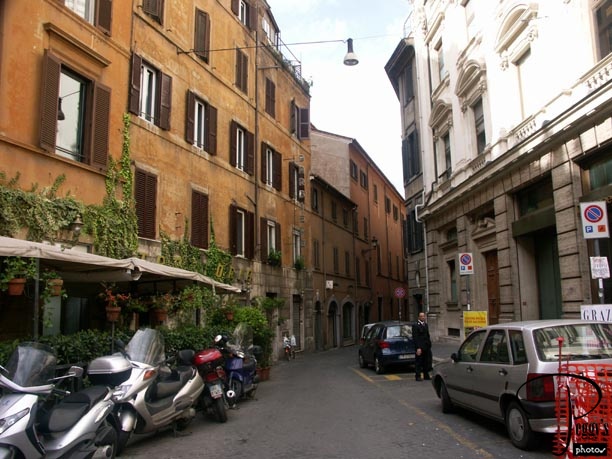
One of the tours that I reserved was not canceled and this was a hop–on hop–off bus to the major sights of Rome. A small bus picked me up at my hotel and then I was transferred to a larger bus at the tour office (Green Line). I got off at the first stop––for the Trevi Fountain, Piazza di Spanga, and the Pantheon. I saw one sign directing me to the Trevi Fountain and that was all. I found the Green Line map that I was given to be hopeless and both my Rome map and the map of my tour book was about the same. But I did find the Trevi Fountain walking along narrow streets like this. I was lucky––this one had a sidewalk.

In Search of the Trevi Fountain
Farther Along
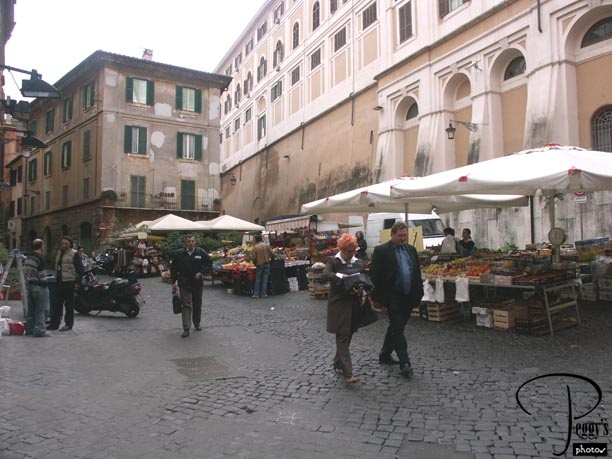
I passed a farmer’s market––I remembered going this way the first night on my night tour of Rome. That is the presidental palace on the right––the home of the President of Italy. Very odd to see a farmer’s market in front of it.

Farther Along
Restaurant Sign
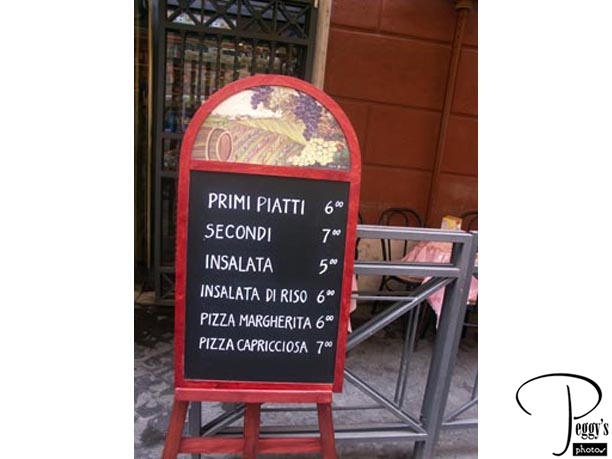
A restaurant’s offerings seen on the way to the Trevi Fountain.

Restaurant Sign
Farther Along

Note the people walking in the street. When a car or a motorscooter wants to pass, you have to move out of the way––sometimes very quickly. It was like this all over Italy.

Farther Along
Trevi Fountain
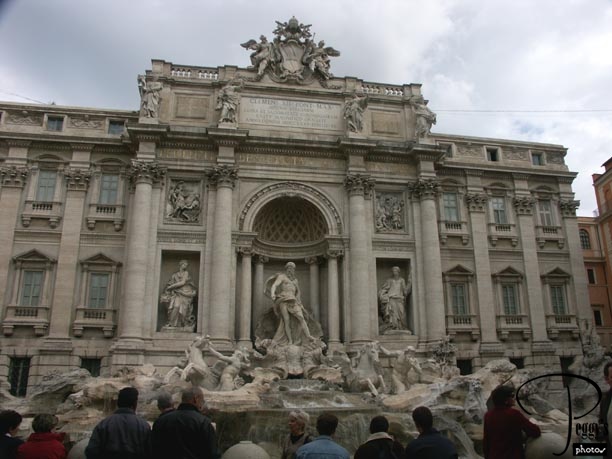
I had already been here on my first night in Rome but I needed to pass it again to get to the Piazza di Spanga, where I hadn’t been. Anyway, I enjoyed seeing it in the daylight and much less crowded.

Trevi Fountain
Trevi Fountain
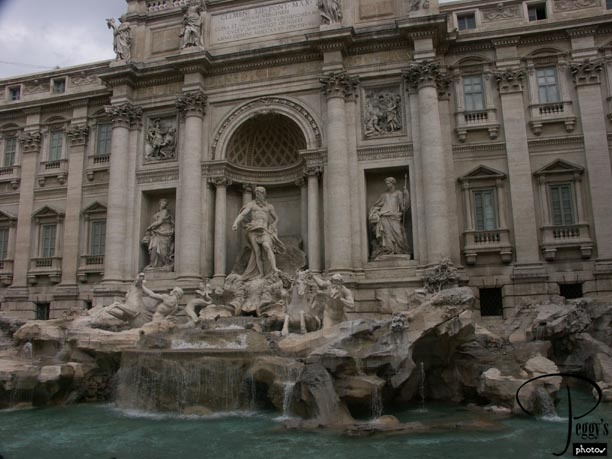
Another view of the fountain. Remember Anita Eckberg in Three Coins in a Fountain swimming in the fountain (I hope I have this right––I saw the movie about 45 years ago).

Trevi Fountain
Trevi Fountain
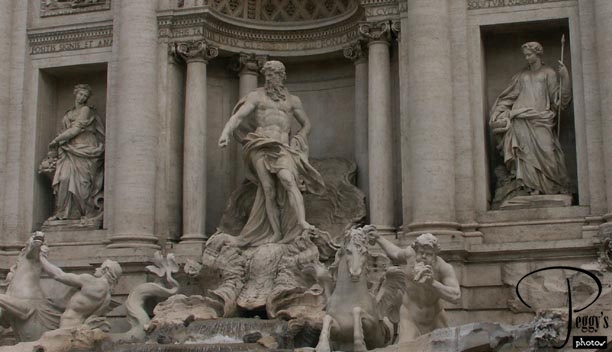
A close–up view of the fountain. The Trevi Fountain was completed in 1762. Neptune is in the middle of the fountain with two Tritons on either side. One of the Tritons is struggling with a fierce sea–horse and the other is dealing with a tamer animal––this symbolizes the contrasting moods of the sea. I didn’t throw any more coins in the fountain as I had already done that on my first time here.

Trevi Fountain
Chestnut Seller
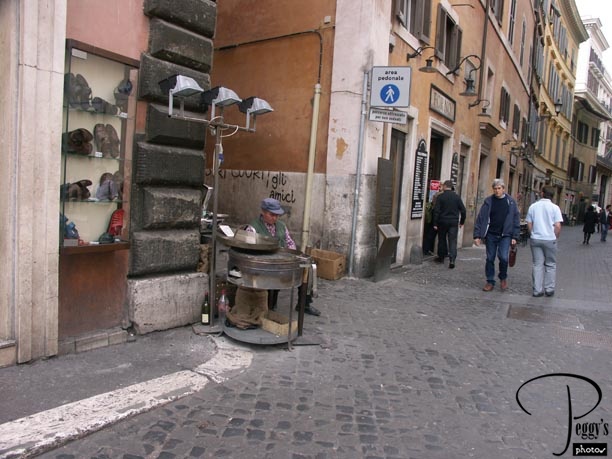
The man selling chestnuts, who I took a photo of on my first night in Rome and which I put on my site, is here again, but this time he didn’t have any chestnuts roasting.

Chestnut Seller
Still Onward
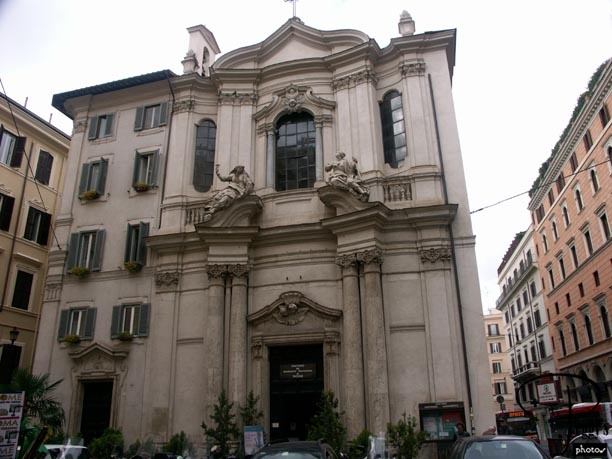
I saw this building on my way to the Piazza di Spanga. I don’t know what it is but whenever you walk in Rome you are going to come across interesting buildings.

Still Onward
Getting Closer
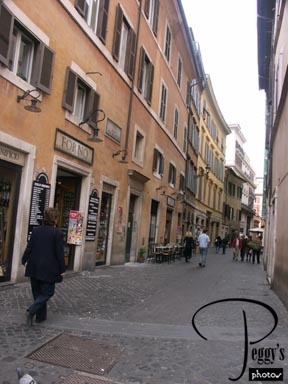
I walked along another narrow street (photo) and finally came to a more major street and asked a doorman of a hotel for directions. He waved his arm in an “over there” motion. I found out that if you ask directions from Italians you are going to get the “over there” arm pointing somewhere “over there.” You are lucky, however, if they point their “over there” arm in the right direction. You are really on your own to figure out how to get somewhere (the exception was the Italian gentleman who drew me a map last night). But luck was with me and I saw a German tour group passing by and figured that they knew where they were going and I tagged along behind them.

Getting Closer
I’ve Arrived

I have made it to the Piazza di Spanga. I recognized this column from a photo in my tour book. It is called the Colonna dell’Immacolata––it is a Roman column, but it is topped by a statue of the Virgin Mary.

I’ve Arrived
Piazza di Spagna
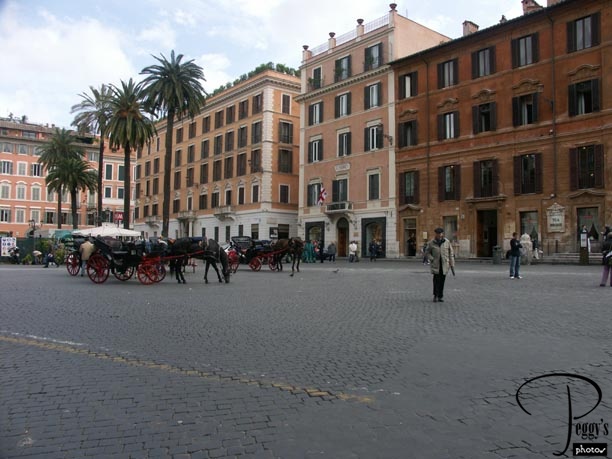
View of the Piazza di Spagna. I think that this was the most beautiful piazza (square) that I saw in Rome though other piazzas are thought by the guide books as more beautiful. Note the palm trees.

Piazza di Spagna
Piazza di Spagna
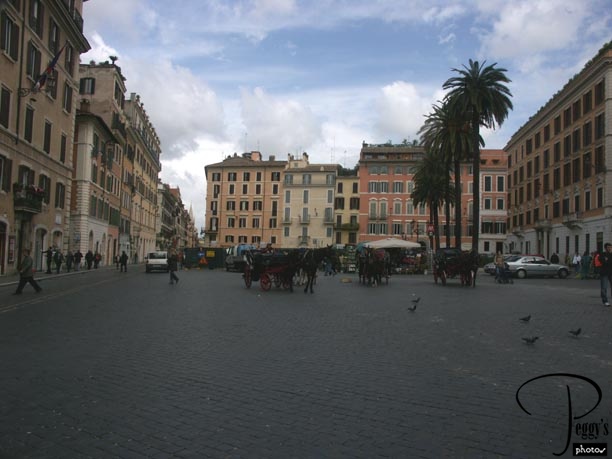
Another view of the Piazza di Spagna.

Piazza di Spagna
Spanish Steps
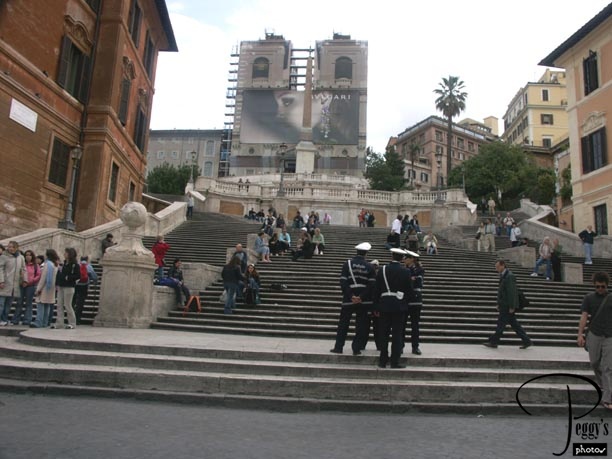
The Spanish Steps are located at the Piazza di Spanga. They were built in the 17th century. At the top of the steps is the Trinita dei Monti church. The church dates back to the 15th century. It was under renovation when daughter Britt and her boyfriend Chris were here a year ago and it was still under renovation on my trip here.

Spanish Steps
Spanish Steps
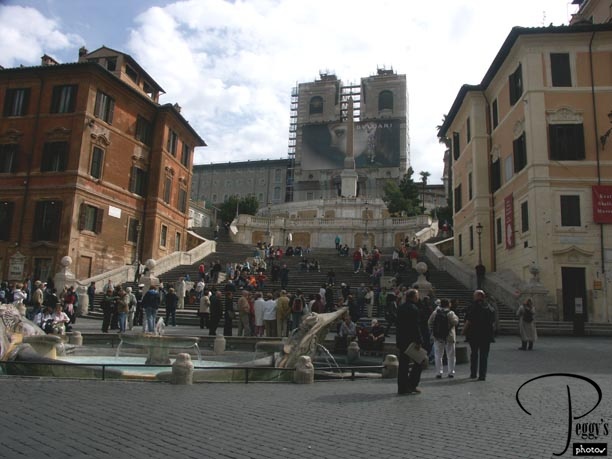
Another view of the Spanish Steps showing the fountain in front. I did not get a good photo of the fountain. It is called the Fontana della Barcaccia and was designed by Bernini (Gian Lorenzo Bernini, 1598–1680) who transformed Rome with Baroque churches, palaces, statues, and fountains.

Spanish Steps
Palazzo di Propaganda Fide
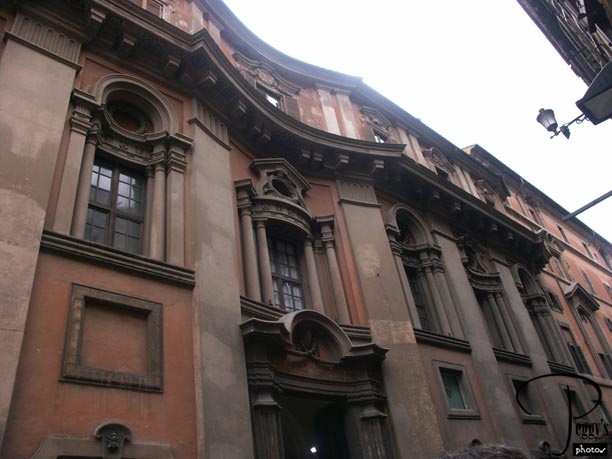
This facade, located just off the Piazza di Spagna, was one of the last works of Francesco Borromini (1599–1667), who along with Bernini also helped transform Rome into the Baroque style.

Palazzo di Propaganda Fide
Via Condotti
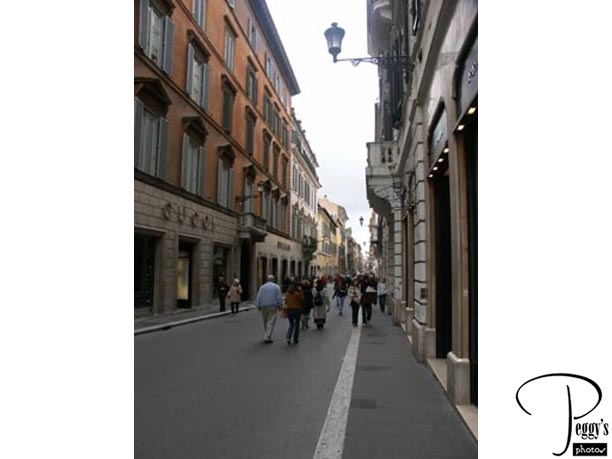
Facing the Spanish Steps and right off the Piazza di Spagna is Rome’s high–fashion district, along the Via Condotti and several other narrow parallel streets to it and several narrow cross streets. Here you see all the designer stores (Gucci, Versace, etc., etc.) and also many very well–dressed Italian women and men (understated elegance seems to be this year’s style).

Via Condotti
Looking Back at the Spanish Steps
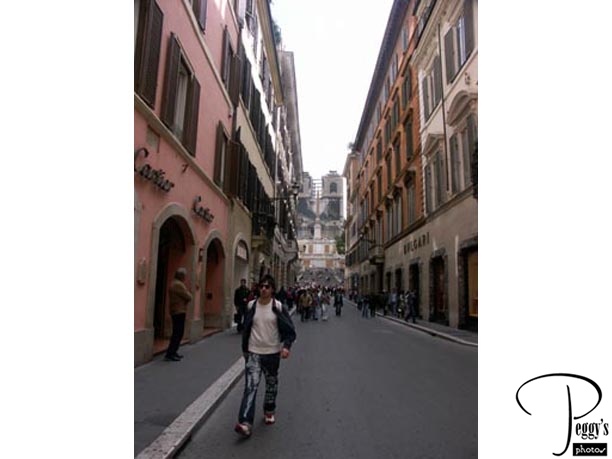
View of the Spanish Steps from Via Condotti.

Looking Back at the Spanish Steps
Via Della Vite
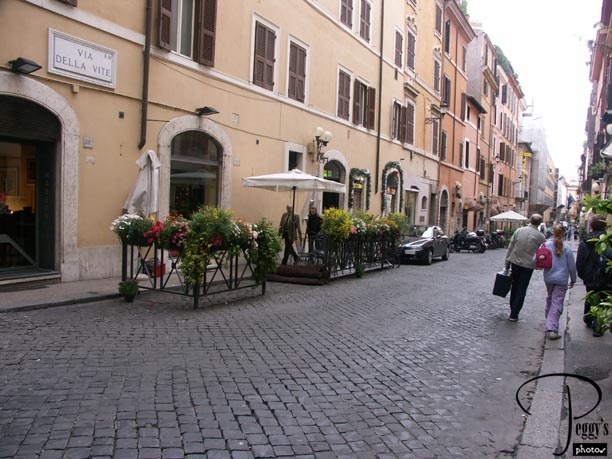
Another of the streets in the area.

Via Della Vite
Via del Corso
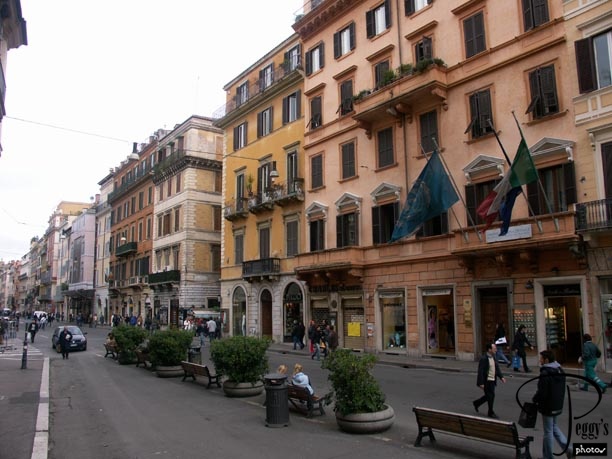
I found the main street that intersected the Via Condotti and went off the find the Pantheon. I couldn’t remember if a visit there was scheduled with my changed tours or not, but I did want to make sure that I visited it.

Via del Corso
Santi Ambrogio e Carlo al Corso
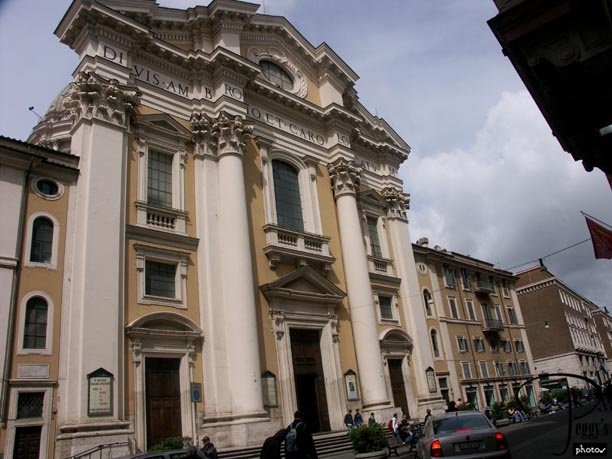
On my way, I passed the Basilica Santi Ambrogio e Carlo al Corso and I went inside.

Santi Ambrogio e Carlo al Corso
Santi Ambrogio e Carlo al Corso
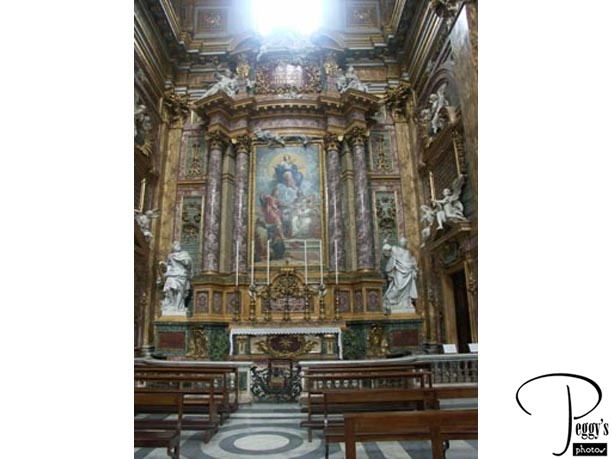
Inside the basilica. This church dates back to 1417 but was rebuilt in 1610 and is dedicated to two canonized bishops of Milan. It is quite beautiful.

Santi Ambrogio e Carlo al Corso
Santi Ambrogio e Carlo al Corso
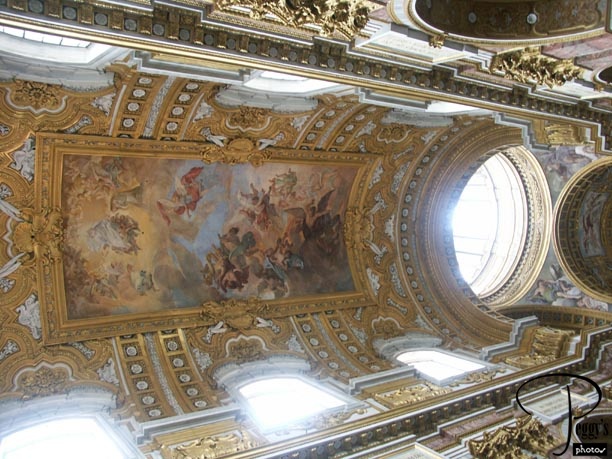
Another view inside the basicila.

Santi Ambrogio e Carlo al Corso
Santi Ambrogio e Carlo al Corso
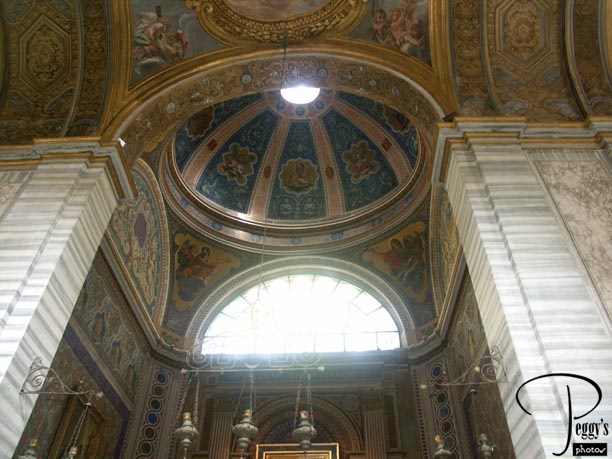
Another view inside the basicila.

Santi Ambrogio e Carlo al Corso
Piazza de Popolo
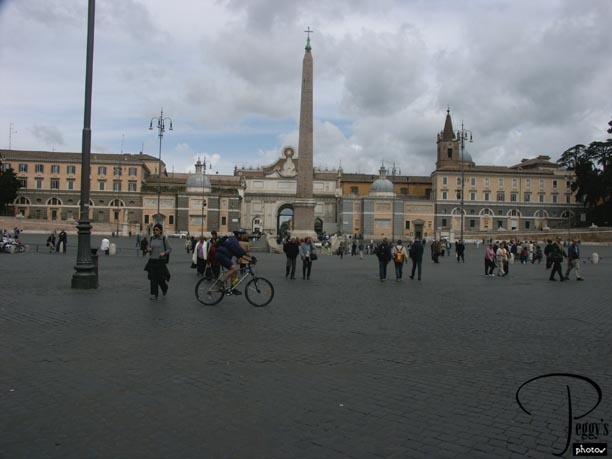
After leaving the church, I started to realize that I was walking in the wrong direction, away from the Pantheon, not toward it. I was almost at the Piazza de Popolo (the People’s Square), so I decided to continue on in the same direction. I was glad that I did as I hadn’t planned on visiting the Piazza de Popolo and it was certainly worth a visit. View of the Piazza de Popolo. An Eygptian obelisk, over 3000 years old, is in the center of the piazza.

Piazza de Popolo
Piazza de Popolo
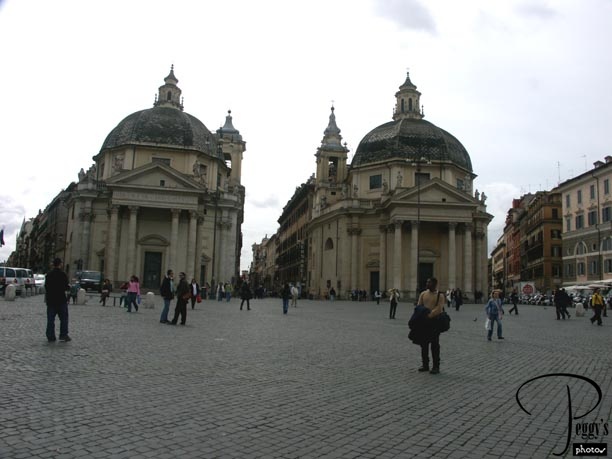
The twin churches of Santa Maria dei Miracoli and Santa Maria di Montesanto at the Piazza de Popolo. I don’t know what century they are from. Note the orange awning on the left of the photo. This is where I had lunch––a delicious ham and cheese sandwich, free potato chips, and a Coke Light.

Piazza de Popolo
Piazza de Popolo
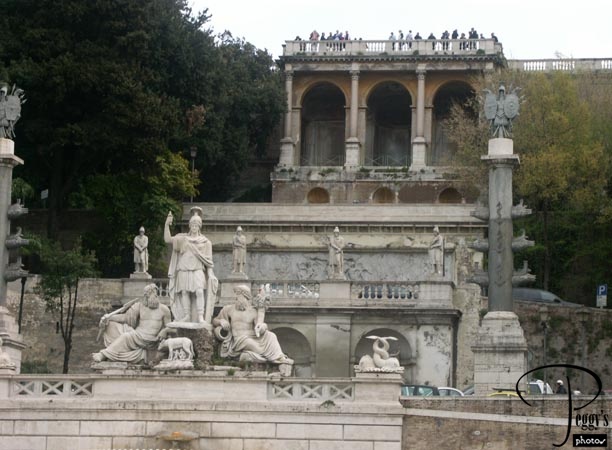
Some of the statues lining the piazza. I don’t know on top of what building or overpass the people are standing on.

Piazza de Popolo
Piazza de Popolo
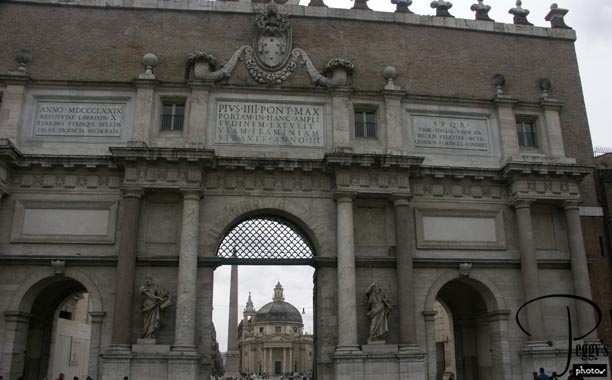
One of the twin churches and the obelisk through the arch of the Porta del Popolo, a 16th century gate, on one side of the Piazza di Popolo.

Piazza de Popolo
Santa Maria del Popolo
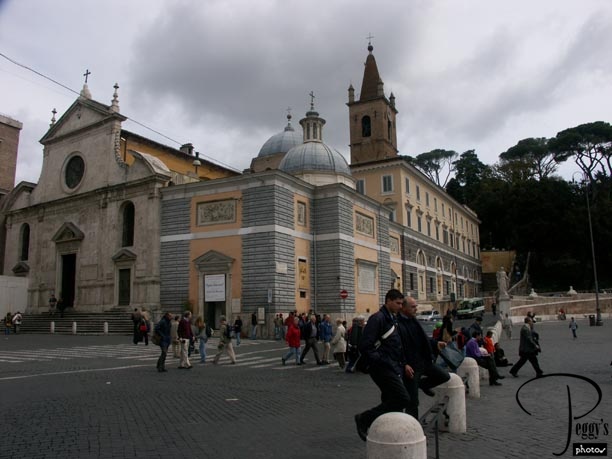
Another church in the Piazza del Popolo. This church is considered to be one of Rome’s greatest artistic treasures and dates back to the 15th century. (Note the crosswalk in the photo. Looks safe doesn’t it––unless you lag a bit behind the group of people you are crossing it with, as I did. This was the spot where, for the second time in Rome, I almost got hit by a car. Or maybe the car started toward me just to hurry me up?)

Santa Maria del Popolo
Santa Maria del Popolo
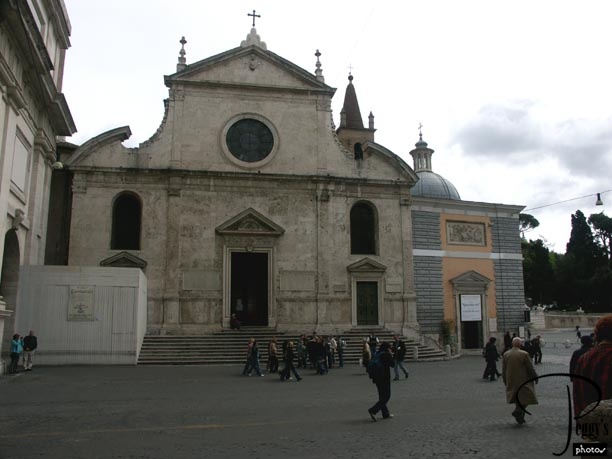
View of the front of the church.

Santa Maria del Popolo
Santa Maria del Popolo
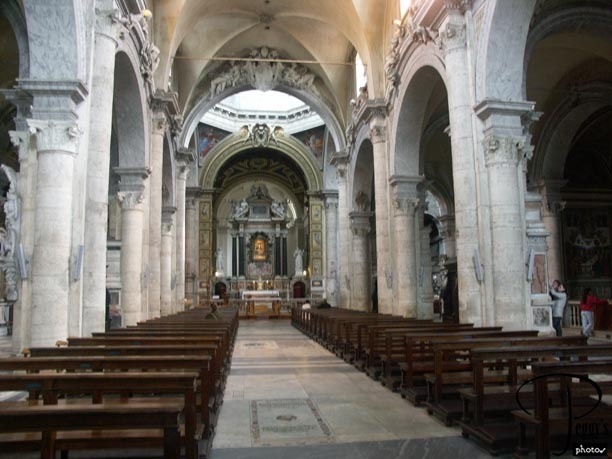
Inside the church.

Santa Maria del Popolo
Santa Maria del Popolo
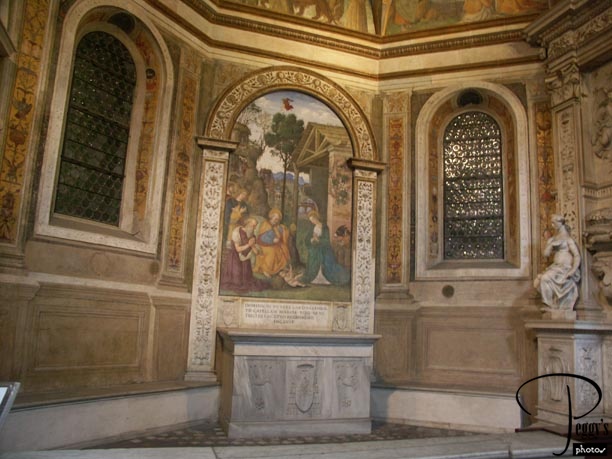
Inside the church.

Santa Maria del Popolo
Santa Maria del Popolo
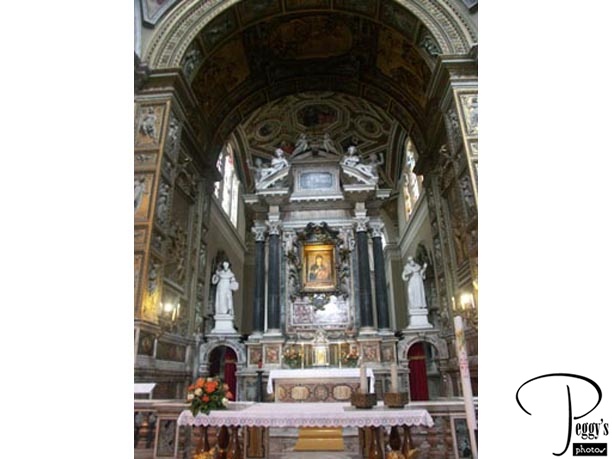
Inside the church.

Santa Maria del Popolo
Santa Maria del Popolo
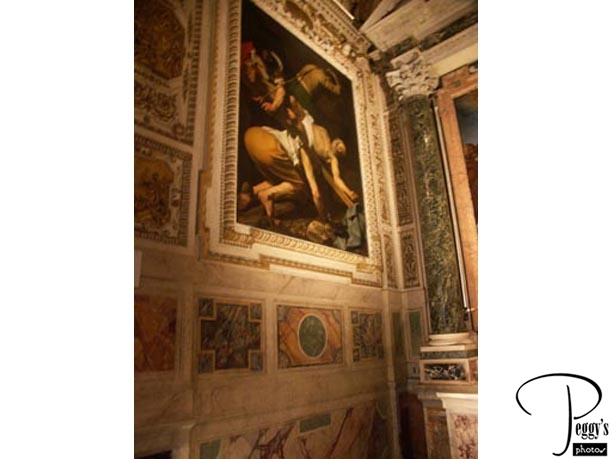
One of the two Caravaggios in the church. This is the Crucifixion of St. Peter.

Santa Maria del Popolo
Santa Maria del Popolo
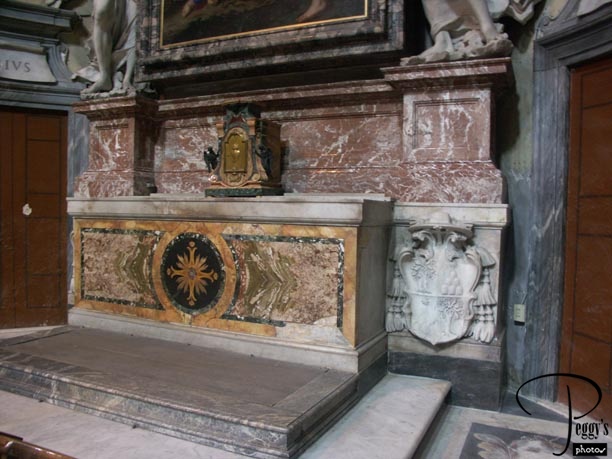
Inside the church.

Santa Maria del Popolo
Santa Maria del Popolo
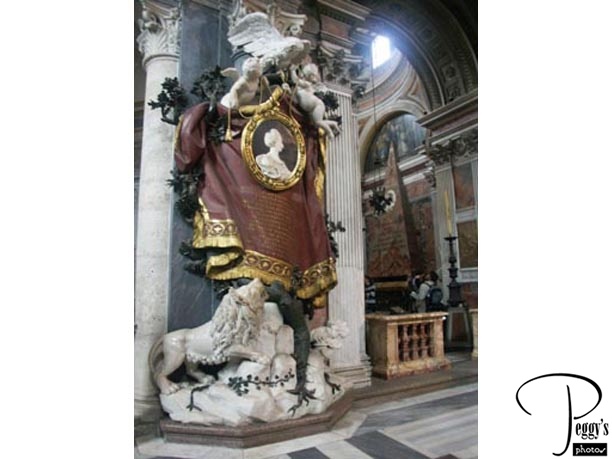
Inside the church.

Santa Maria del Popolo
Santa Maria del Popolo
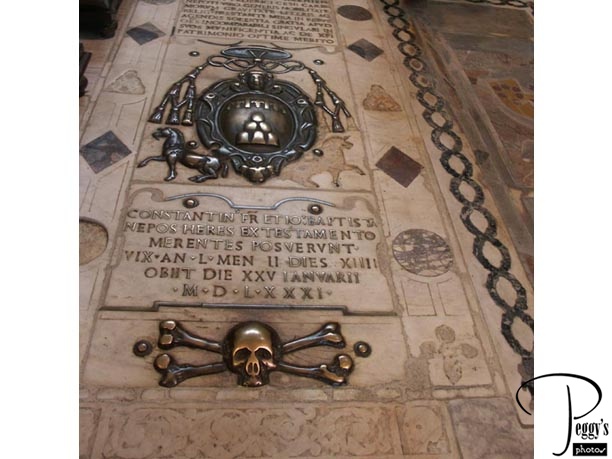
Inside the church. From the Piazza del Popolo, I took a taxi (there was a taxi stand in the piazza––no way was I going to try to find my way back to the Trevi Fountain to get on the hop–on hop–off bus) to Castel Sant’ Angelo, near the Vatican. If you go to Rome, you will probably want to spend a whole day seeing the Trevi Fountain, the Pantheon, Piazza di Spanga, and Piazza del Popolo. There are other great things to see in this area that I never got to. Also, if you have only a short time in Rome, you may want to start out the day by visiting the Villa Borghese first, which on the hill above the Piazza del Popolo.

Santa Maria del Popolo
St. Peter’s Basilica

This is my second view of St. Peter’s Basilica in Vatican City. I was on my way to visit the Castel Sant’ Angelo, which is right across the street.

St. Peter’s Basilica
Walking to the Castel Sant’ Angelo
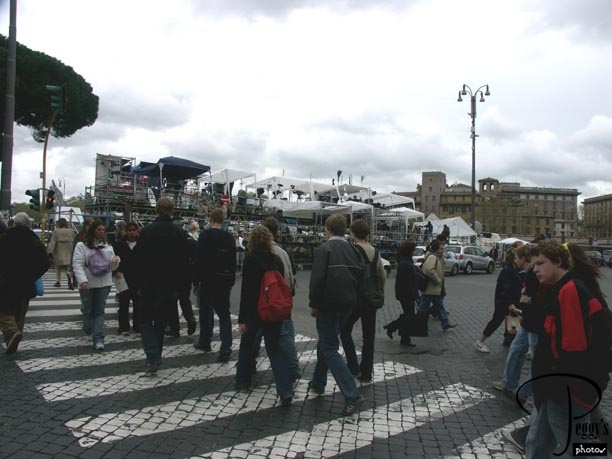
Crossing the street from the Vatican to the Castel Sant’ Angelo. You’ll see in the photo some of the media circus here to record the events at the Vatican.

Walking to the Castel Sant’ Angelo
Castel Sant’ Angelo
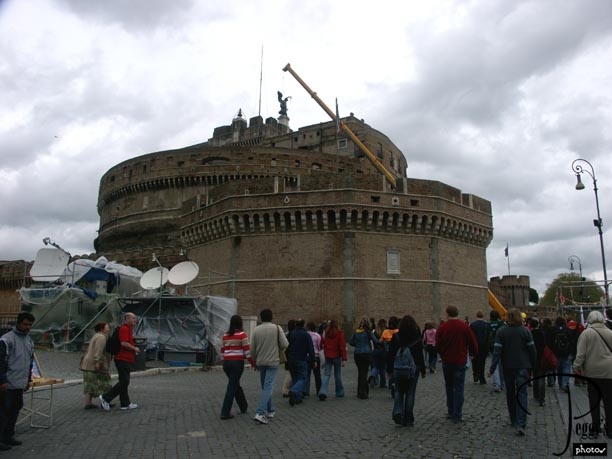
That large crane and the media circus didn’t do too much to help this photo of the Castel. The Castel was built in 139 A.D. as Emperor Hadrian’s mausoleum. It also served, during various periods in Rome, as part of the city wall, as a citadel and a prison, and as the residence of popes when they needed a place of refuge. Actually, the Vatican Corridor connects the Vatican Palace to the Castel Sant’ Angelo, an escape route for the popes when they were in danger.

Castel Sant’ Angelo
Castel Sant’ Angelo
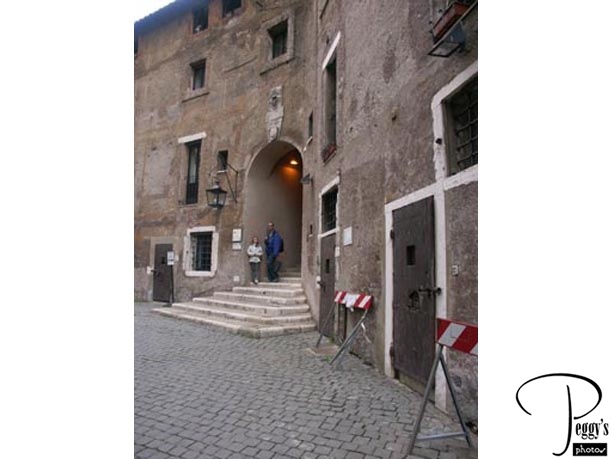
Scene from inside the Castel.

Castel Sant’ Angelo
Castel Sant’ Angelo

Cannon balls.

Castel Sant’ Angelo
Castel Sant’ Angelo
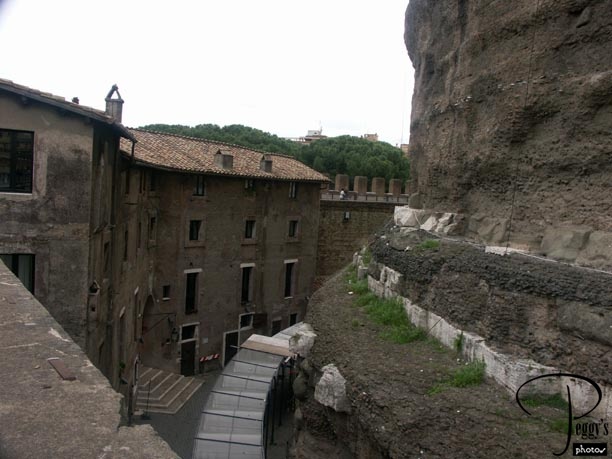
Another view inside the Castel.

Castel Sant’ Angelo
Castel Sant’ Angelo
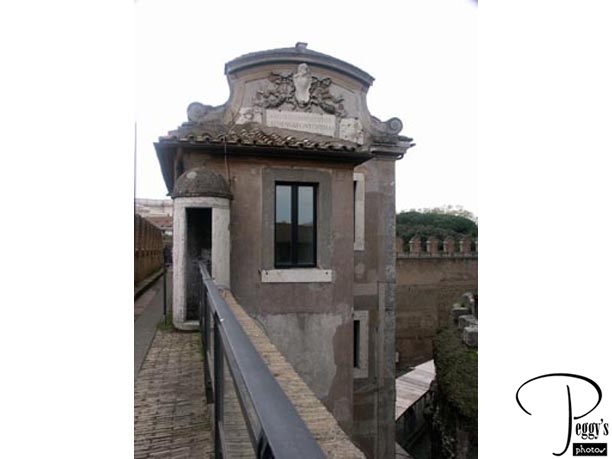
Another view inside the Castel.

Castel Sant’ Angelo
Castel Sant’ Angelo
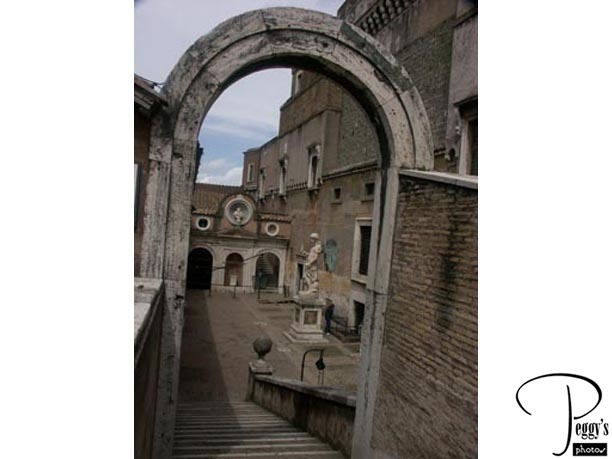
The Court of Honor.

Castel Sant’ Angelo
Castel Sant’ Angelo
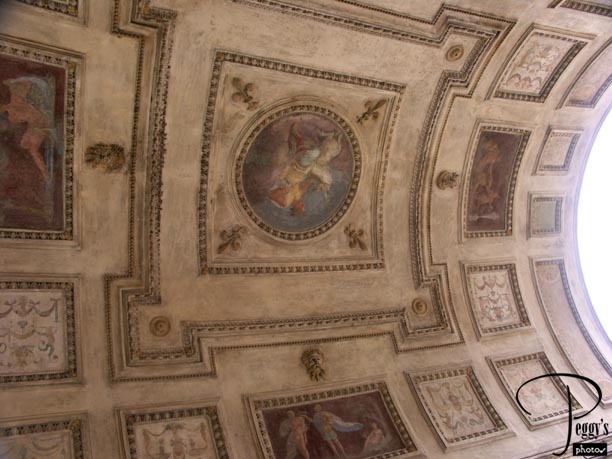
A ceiling inside the Castel.

Castel Sant’ Angelo
View of Rome
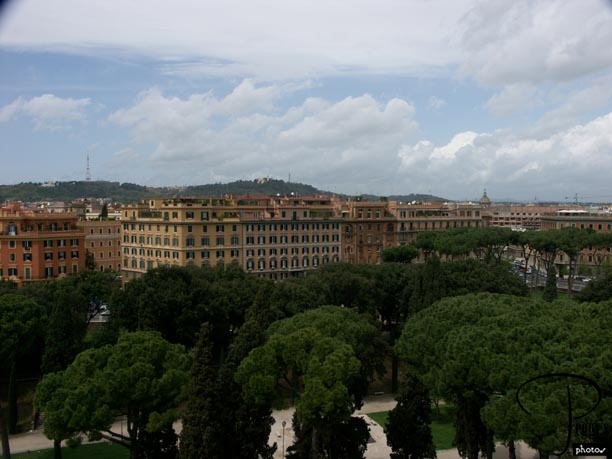
After looking at one of my books on Rome, I realize that I missed some very interesting rooms in the Castel and I think that I remember avoiding going up a very steep staircase and that is probably was the way to the rooms. Anyway, I got some good photos of views of Rome from the top of the Castel.

View of Rome
View of the Tiber River
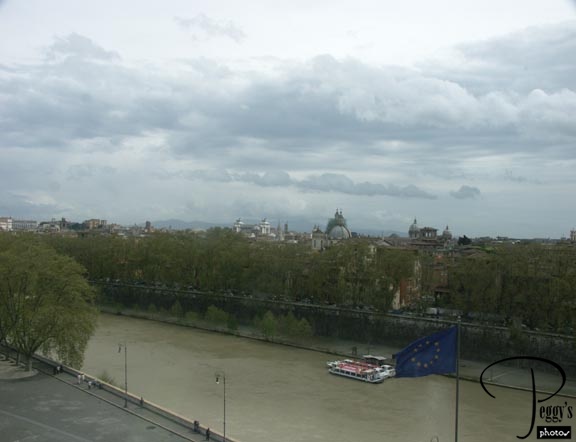
The Tiber River and its banks cannot be compared to the Seine in Paris, but there are some interesting views of it.

View of the Tiber River
View of the Ponte de Angelo
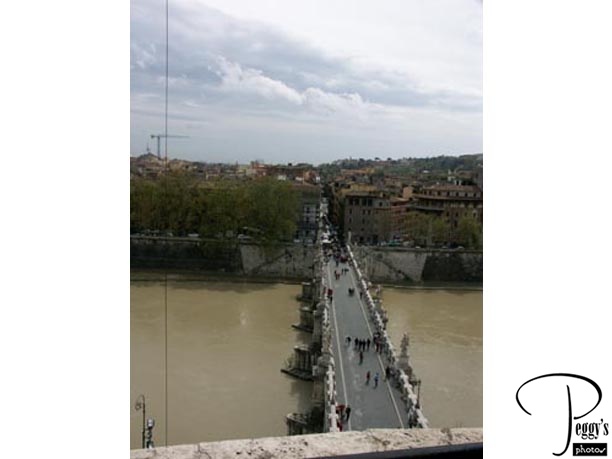
This is the bridge leading to Castel from the other side of Rome.

View of the Ponte de Angelo
Ponte Pr. Amedeo
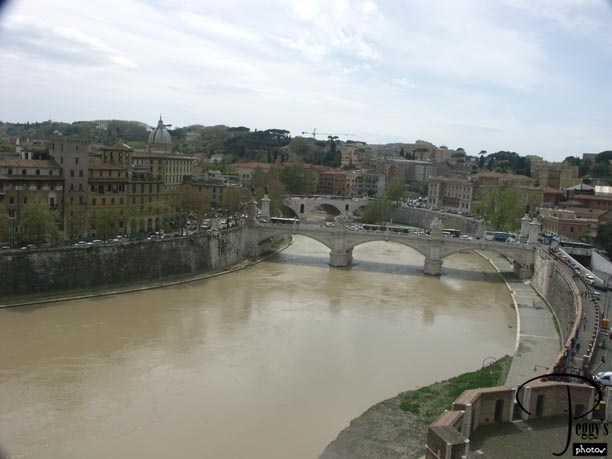
This is the bridge that you would probably take to get to Vatican City. I crossed this bridge on a bus and I think you would get an excellent photo of the Castel Sant’ Angelo from it.

Ponte Pr. Amedeo
View of St. Peter’s
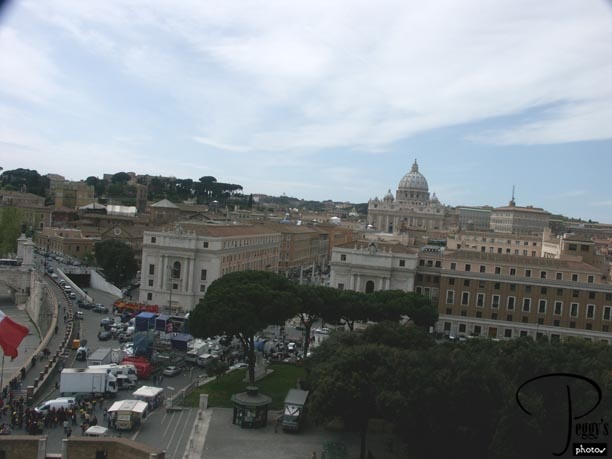
View of the dome of St. Peter’s Basilica.

View of St. Peter’s
Another View of St. Peter’s
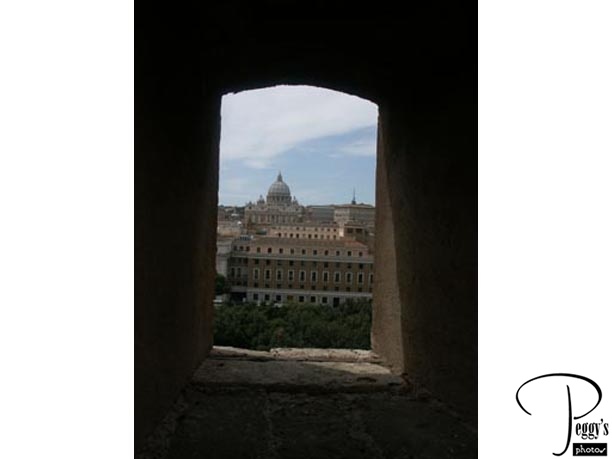
St. Peter’s Basilica through an opening in the Castel wall.

Another View of St. Peter’s
Ponte de Angelo

Another view of the Ponte de Angelo.

Ponte de Angelo
Ponte de Angelo

Walking over the Ponte de Angelo.

Ponte de Angelo
Castel Sant’ Angelo
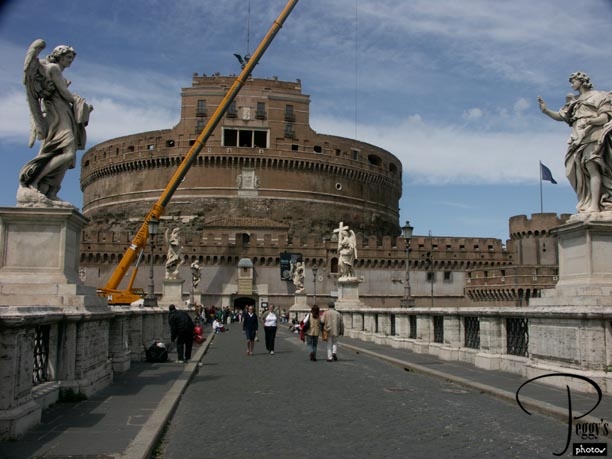
View of the Castel Sant’ Angelo from the Ponte de Angelo.

Castel Sant’ Angelo
Ponte de Angelo
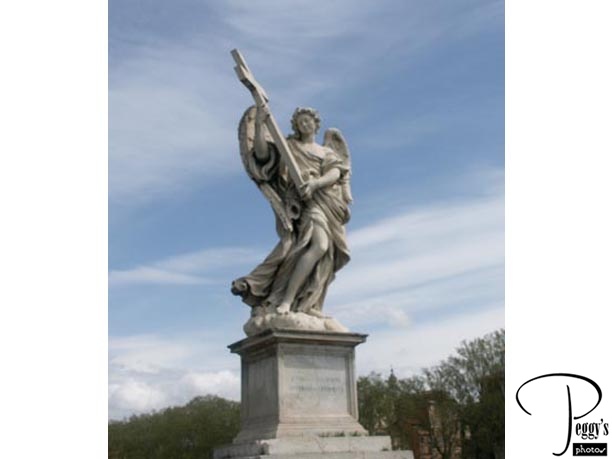
Statue on the Ponte de Angelo.

Ponte de Angelo
Ponte de Angelo
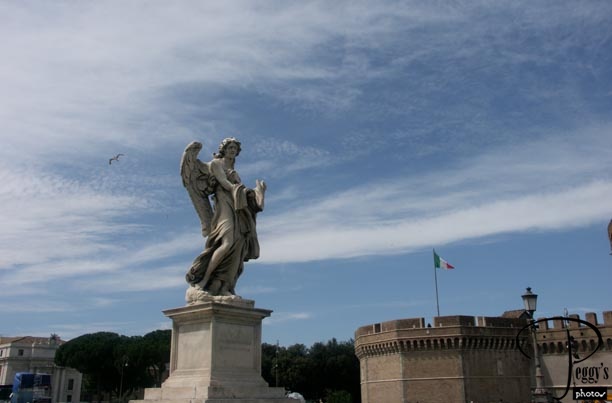
Another statue on the Ponte de Angelo.

Ponte de Angelo
Castel Sant’ Angelo Musicians
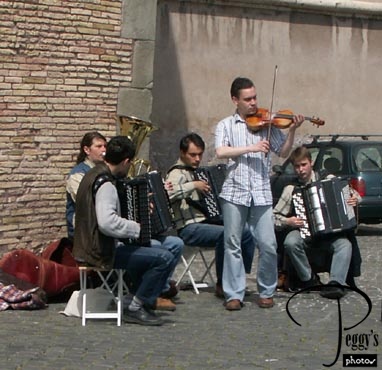
This ragtag–looking group was playing outside the Castel Sant’ Angelo. Nothing ragtag about their music. They were excellent. There is a movie clip of them on this website: Go to Movies, Western Europe, Italy, “Castel Sant’ Angelo Musicians, Rome.”

Castel Sant’ Angelo Musicians
Finding My Way Back to My Hotel
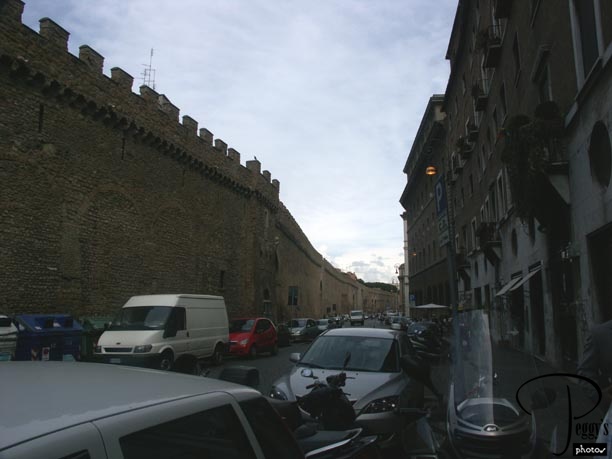
It was only about 2:45 p.m. but jet lag was really getting to me. The hop–on hop–off bus had a stop in front of the Vatican but I couldn’t figure out from their map as to where the pickup point was. I saw a bus that would go to the Termini where I could catch the Metro but I didn’t have a bus ticket. The bus ticket machine near the bus stop was nonoperational. The bus driver told me: No ticket, no bus ride. So I went off in search of the Vatican Metro station but was unsure of where it was even after consulting two maps. I asked some Vatican policemen how to get there (another wave of the “over there” arms). I then asked them if there was a taxi stand nearby and they said no (I found out later that there was a taxi stand 30 feet from where they were standing). So I started walking in the “over there” direction and saw a bus that would take me to the Piazza Bolgona, where my hotel was. I asked the bus driver where I could buy a ticket and he said just keep walking until I find a tobacco shop and buy a ticket there. I did this along this wall and thought that I would find first either a tobacco shop or the Metro. I found the tobacco shop first, bought two tickets, and walked the 15–minute walk back to the bus. (This was a big mistake that I made in Rome––not to buy a bunch of tickets that I could use either on the Metro or the buses. They were only 1 Euro each and even if I didn’t use them up it wouldn’t have been a great investment.)

Finding My Way Back to My Hotel
On My Way Back to the Bus
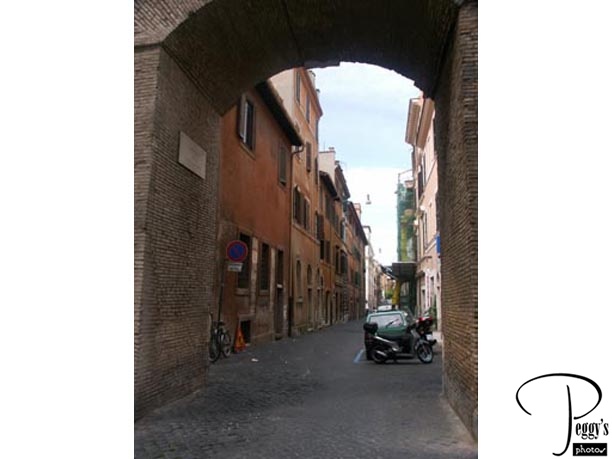
I took this photo through an opening in the wall. All kinds of surprises to be seen when walking through Rome. I then got on the bus going to Piazza Bologna and had a wonderful bus ride and saw things in Rome that I wouldn’t have seen otherwise. However, some other tourists that I talked to said they had awful bus rides as the buses were so crowded and they had to stand in the middle of a mob. As the bus was starting its route from where I got on, I had a seat. Before going back to my hotel, I stopped off at a neighborhood pizzeria/tavole calde––a tavole calde offers a selection of already made up pastas, meat, vegetables, and some other items. I had a shrimp, lettuce, tomato sauce pizza which was absolutely delicious. Then, I went to the pastry shop and bought some cookies to take back to the hotel. All in all, a good day.
